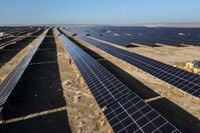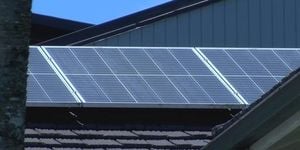In a significant shift in the solar panel market, the United States has imposed steep tariffs on imports from several Southeast Asian countries, resulting in a dramatic change in export dynamics. As reported by Reuters on May 7, 2025, the U.S. government finalized tariffs on solar cells and modules imported from Vietnam, Malaysia, Thailand, and Cambodia. This move, aimed at preventing dumping by primarily Chinese-owned factories, follows two previous rounds of tariffs imposed in June and November of the previous year.
After the imposition of these tariffs, Chinese companies have relocated their production to Indonesia and Laos, significantly boosting their exports to the U.S. market. The combined share of Indonesia and Laos in the U.S. solar modules market surged to 29% in the three months after the second round of tariffs, a stark rise from less than 1% in 2023. This shift illustrates how quickly trade routes can change in response to new tariffs.
Analysts and industry experts suggest that the manufacturing capacities in the affected Southeast Asian countries are likely to be drastically reduced or shut down altogether. Yana Hryshko, head of global solar supply chain research at Wood Mackenzie, noted that "all solar manufacturing capacity in the four Southeast Asian countries hit with high tariffs would now likely be shut down or reduced dramatically." This prediction raises concerns about the future of the solar industry in these countries.
The impact of the tariffs is evident in the export figures. Solar panel exports from Vietnam, Malaysia, Thailand, and Cambodia to the U.S. have plummeted by 33% on an annual basis since the first round of tariffs. In stark contrast, exports from Indonesia and Laos have skyrocketed, increasing around eight-fold during the same period. Overall, U.S. solar panel imports have dropped by 26% since June 2024, with the market share of the four affected countries collapsing from 82% in 2024 to just 54% in early 2025.
Despite the higher costs associated with imports from the targeted countries, U.S. imports of solar cells—components that can be assembled into panels—have tripled since the initial tariffs were applied. This indicates a growing reliance on these imports, even as manufacturers in Indonesia and Laos have increased their presence in the U.S. market. In fact, exports from these countries surged by approximately 17-fold, with solar cells accounting for around 28% of all U.S. solar imports since the first round of tariffs, compared to just 6.5% in 2023.
However, the shifting landscape isn't without its challenges. Fei Chen, a solar research analyst at Rystad Energy, pointed out that many solar manufacturers are now revising their export strategies due to concerns about potential tariffs on exports from Indonesia and Laos. "Several solar manufacturers plan to set up production bases in non-Southeast Asia regions such as Turkiye, Oman, Saudi Arabia, UAE, and Ethiopia to supply the U.S. market," she said. This response highlights the ongoing adjustments companies are making in the face of evolving trade policies.
Meanwhile, the situation in Thailand is particularly dire. On April 21, 2025, the U.S. announced final anti-dumping (AD) and countervailing (CVD) tariffs on solar panels and components from Thailand, leading to rates as high as 972.23% for certain companies. This staggering increase is a result of the U.S. government's investigation into Thailand’s solar export practices, which began in April 2024. The tariffs were a response to the observation that China was using Thailand as a production base to circumvent tariffs on exports to the U.S.
Thailand's solar panel and component exports have seen a remarkable increase—47-fold from 2015 to 2023—largely due to the relocation of Chinese production to the country. However, the recent tariffs threaten to decimate this growth. The SCB EIC has assessed that Thai solar panel and component exports to the U.S. could shrink to near zero by 2026. This prediction is based on two main factors: the loss of price competitiveness against other Asian manufacturing countries that are not subject to similar tariffs, and the significant market share loss Thailand has already experienced.
Since the implementation of the AD/CVD tariffs, Thailand's market share in the U.S. has dropped from 28% in early 2024 to just 6% in the first two months of 2025. In contrast, Indonesia's market share has increased from 2% to 16% during the same period. These shifts have resulted in a staggering 52% year-over-year decline in the value of Thai exports in the first quarter of 2025, amounting to only 12,623 million baht.
To cope with these challenges, SCB EIC has proposed several strategies for Thai solar manufacturers. These include becoming suppliers of intermediate products to solar cell factories in countries less impacted by U.S. tariffs, expanding export markets to regions with strong solar power generation potential, and increasing revenue from clean energy production both domestically and internationally.
As the landscape of solar panel exports evolves, it is clear that the ramifications of U.S. tariff policies are far-reaching, affecting not only the countries directly targeted but also reshaping the global solar market. The future remains uncertain for many of these nations as they navigate the complexities of international trade and strive to maintain their foothold in a competitive industry.




